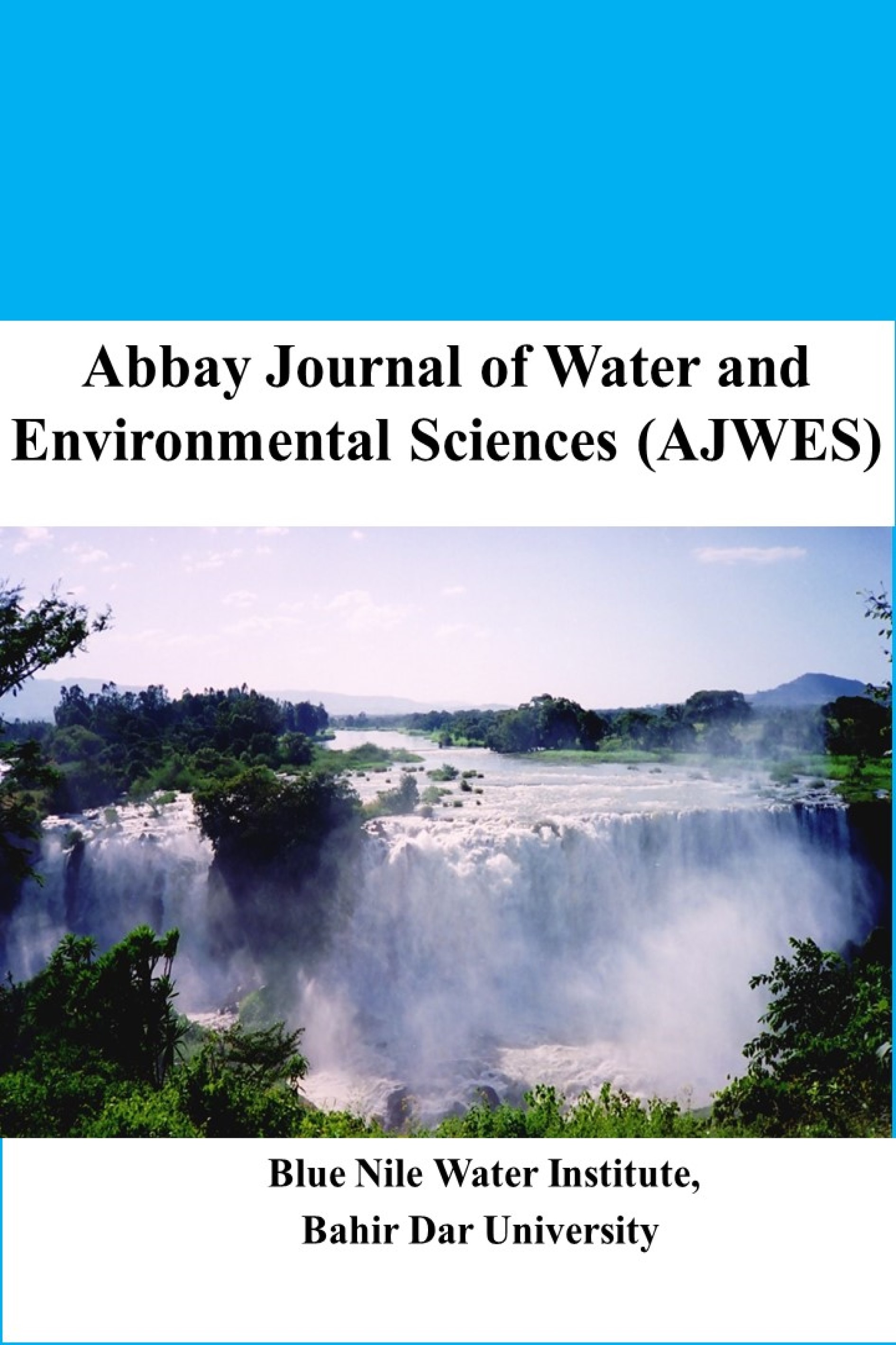Assessment of Drinking Water Quality from Source to Point of Use in Merawi Town, Amhara National Regional State, Ethiopia
Abstract
This research focused on evaluating drinking water quality from source to point of use in Merawi town, which is located in Amhara National Regional State, Ethiopia. Water samples were collected in both the dry season (from March to April) and the wet season (from mid-July to mid-August) of 2021. A total of 50 water samples were collected from 25 purposively selected sampling points and eleven physicochemical parameters (pH, temperature, turbidity, EC, TDS, total hardness, Ca2+, Mg2+, NO3, NO2- and Cl-) and bacteriological parameters (total coliform and faecal coliform) were tested using standard procedures. Sanitary inspections were also conducted in order to identify the possible causes of contamination. The results show that except turbidity and temperature all the selected physicochemical parameters were within the acceptable limits of WHO and Ethiopian standards. The maximum turbidity values of 14.27NTU was recorded in the wet season at the point of use while the highest temperature value of 25.63OC was recorded in the dry season at the point of disinfection. Bacteriological test results show that all the samples had positive total coliform counts in both seasons whereas only 28% and 12% of the samples had zero faecal coliform counts in the dry and wet seasons, respectively. The sanitary inspection results indicate that uncovered collection chamber, wrong way of disinfection, incidence of cross-contamination, change in water flow due to intermittent water supply, presence of older pipe material and dead-end layout system are the possible causes of contamination. In order to provide safe drinking water to the residents of the town, there is an urgent need to establish buffer zone to the water source area, maintain the collection chamber cover, develop proper drainage network and improve the chlorination system.
Copyright (c) 2024 Abbay Journal of Water and Environmental Sciences

This work is licensed under a Creative Commons Attribution-NonCommercial-NoDerivatives 4.0 International License.

